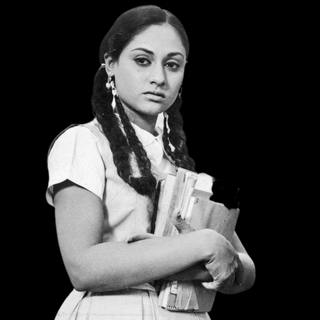
Can’t Let Go: Of the Nuanced Depictions of Flawed Feminism in ’10 Things I Hate About You,’ Despite Its Sexist Plot
The movie is better but flawed, sexist but still progressive — showing a story before and of its time.

In Can’t Let Go, we revisit the nostalgia around our favorite pop culture moments that haven’t aged well.
For actor Julia Stiles, “10 Things I Hate About You” was a jumping-off point into mainstream cinema. But she has a hard time watching the movietoday— the regressive scaffolding of the plot makes it a tad cringe.
The movie is derived from Shakespeare’s famous play “The Taming of the Shrew” — where the shrew is an awful representation of a woman and the man is tasked with “taming” her. Adapted to a Hollywood set up in 1999, in the format of a teen comedy, the movie was supposed to be an upgrade, a more palatable version of the play.
And while “10 Things I Hate About You” succeeds in stripping off the blatant misogyny, it doesn’t really abandon the regressive plot. Here’s how it plays out: a high-school setting, an over-protective father with two daughters. The younger one (Bianca) cannot date until the older Kat (who is presented as a man-hating “prude”) finds a boyfriend, the father’s diktat goes. So the person interested in Bianca pays Patrick (the gorgeous Heath Ledger) to woo Kat. Of course, Patrick tries to change her, and Kat eventually lets her guard down.
The women on-screen pander to sexist, reductive stereotypes — the idea that women should change to please men, or feminists are inherently angry, or that conventional “girly-girls” are worthy of disdain. Not to mention the troubling morals of sexuality andbody acceptance (the slut-shaming was relentless), the reductive templates of characters that boxed them into cliches, and the upper-middle-class, white-dominated storyline.
The thing about adapting sexist works of literature for a Hollywood audience is any improvement feels like a big improvement. Credit where credit is due: Heath Ledger’s Patrick was nowhere near the travesty of his Shakespearean counterpartLucentio. But language laden with sexism, bias, and misogyny still exist. So while “10 Things I Hate About You” might be a better take on the play, the film joined the league of other sexist cinematic portrayals like “Cruel Intentions” (2000) or “Never Been Kissed” (1999).
Intent and action aside, the movie has a cultural life of its own and deserves scrutiny. To that effect, here’s why I’m on board with the imperfections of the movie. Julia Stiles (Kat) is a feminist; she is also angry. The devil-may-care attitude sits resiliently within her. She has a right to be angry, as someone born of the injustices women face and someone who has decades worth of internalized misogyny within her.
Kat hates her sister for being feminine and “too girly” (the good old “I’m not like all girls” rhetoric), and thus Kat’s feminism is not perfect. But the movie spotlights it without tilting the scale against her. While the 90s feminist is still very much a pawn of the system, she is still someone conscious of the social rules she operates within (and something she is eager to reject) — the friction within is hard to miss. Her feminism is flawed, but strong, something that resonates decades later.
Related on The Swaddle:
In the collective male consciousness, Kat sits as a “high-strung prude,” and Cameron’s attempt to pay someone to woo her reinforces restrictive ideas of sex and sexuality.
But “10 Things” never makes it feel like Kat lost, when she does open up to Patrick. She can oppose every regressive dynamic and still feel love and attraction and the rest. Even when she does find out about the bet, she does not wallow, claiming it as a victory for herself.
Coming to the men of the movie, the fabled “tamers”: the constructs around them are deeply problematic — placing bets on the woman’s choices, trying to bend her to their will, the father who wants to control his daughters.
Which is not to discount Patrick’s character. So much has been said about the feminism in “10 Things,” except for Patrick’s “dreamboat”-type persona. Teen comedies tend to brush off issues of consent, assault, while framing sexual experiences as “conquests” for the man; Patrick, on the other hand, iscognizant of consent. There is a scene when Kat is incredibly drunk and he refuses to kiss her — this he gets right.
While the movie may not have the best diversity or gender-inclusive language, it seems to be very much aware of its failings. A scene with the black English teacher (Mr. Morgan) shows this: he chastizes Kat for her rich, white-girl problems that are tone-deaf to socio-cultural realities. Her anger is a privilege and she overlooks injustice because she can. But the lack of understanding — or empathy —doesn’t take away from the gravity of social stratification — “10 Things” was able to call out the angry feminist for her lack of intersectional thinking.
It feels like a movie of its moment — of 1999, of how feminism, high school romance, ideas about gender, and social structures unfolded. “The quips, the clothing, and especially the music make it feel extremely of that year, when I was in high school,” culture writer Alissa Wilkinson notes in Vox. While it might be enough to reclaim the movie based on the nostalgia of the 1990s high-school rom-com, it’s worth also lauding the movie for letting ideals and flaws co-exist. The imperfections don’t mar what is supposed to be.
The self-reflectivity doesn’t only criticize Shakespeare’s cultural tropes but also the ones that lingered in the ‘90s — hell, even now. Which is precisely why it’s hard to let “10 Things” go. The movie is better but flawed, sexist but still progressive — showing a storybefore and of its time.
Saumya Kalia is an Associate Editor at The Swaddle. Her journalism and writing explore issues of social justice, digital sub-cultures, media ecosystem, literature, and memory as they cut across socio-cultural periods. You can reach her at @Saumya_Kalia.
Related


Woe Is Me! “Online Education Has Killed My Confidence. Will I Ever Bounce Back?”
